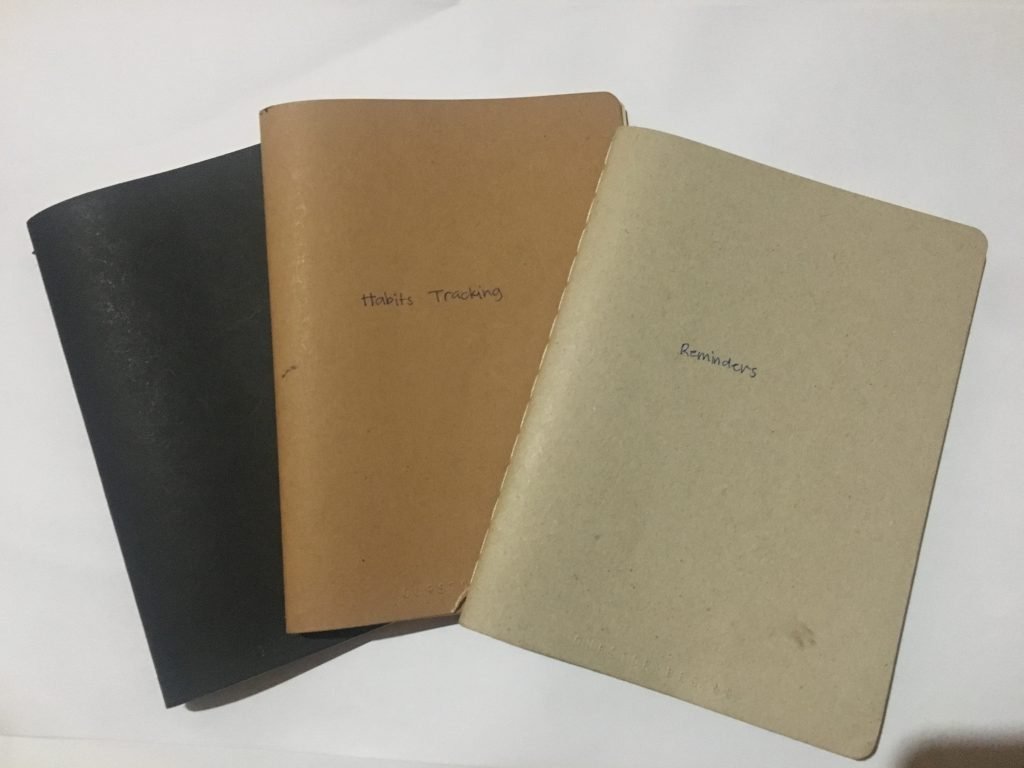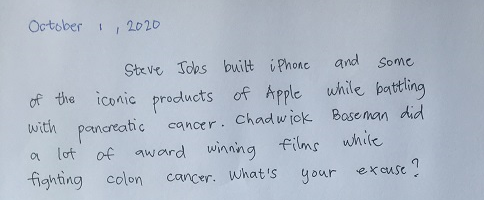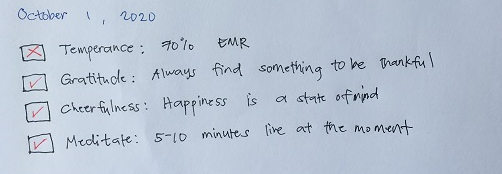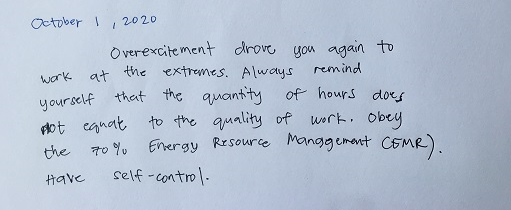The Stoics are widely known for journaling. The Roman Emperor Marcus Aurelius wrote his personal reflections regularly to what we would know now as the Meditations. Seneca, a Stoic widely for his letters sent to Lucilius, seemed to do his journaling at night. “When the light has been removed and my wife has fallen silent, aware of this habit that’s now mine, I examine my entire day and go back over what I’ve done and said, hiding nothing from myself, passing nothing by”. Former slave Epictetus seemed to do it day and night. “Every day and night keep thoughts like these at handwrite them, read them aloud, talk to yourself and others about them.” There are a lot of scientifically proven benefits of journaling. For me, it’s all about emotional hygiene. It is a way for me to decrease emotional distress.
I have three journals I keep and write regularly. I am sharing my methods of journaling and hopefully, you will find value in them.

These are the pocket notebooks I used for my journaling.
Black – To capture bothersome thoughts and put into words
Brown – To track habits
Beige – To evaluate mistakes
I. The Meditations Journal (Black)
I call this the “mind-dump” journal. Whatever is bothering me, I try to capture in a few sentences and write down in the journal. A thought becomes bothering when it keeps coming to your head like there is a replay button programmed to run an infinite number of times. I figure it out for myself the reason for its willful reoccurrence is either one of the following:
(1) Negative Emotion. An example of negative emotion is anxiety. As soon as I become aware of the negative emotion, I think my way philosophically (Stoicism predominantly) and then write it down in the journal.
Here is a sample entry I wrote in my journal back when I caught myself making a lot of excuse about pursuing a business opportunity

(2) Positive Emotion. While not as evil as the first one, positive emotion can be bothersome at times. For example, too much excitement can be an overwhelming feeling where we try to anticipate a near-future event. We anticipate everything – the rewards, the praises, elevated status, etc. However, these things are virtual as they live in the future. They might even disappoint us if they don’t happen. The point is that both positive and negative emotions rob us of the ability to enjoy the present moment.
He is a sample entry I wrote when at one time I become too overwhelmed at a certain accomplishment that I made. My ego went all-time high. I then neutralize it with the similar maxim Marcus Aurelius wrote in his book The Meditations which is
“Matter. How tiny your share of it.
Time. How brief and fleeting your allotment of it.
Fate. How small a role you play in it.”
I always remind myself of this quote whenever I feel a surge of some egoistic behavior, putting my self-importance in the center of the world.
I would then write in my personal meditation journal.

The key here is to get into the habit of catching these emotions first. Why emotion first? Because it’s the emotion that is stronger while the thought or belief is trickier to identify. Once I identified the positive or negative emotion I think my way philosophically. In other words, I challenge my existing thoughts and belief and replace them with a more sensible one. One of the main benefits of studying philosophy such as Stoicism is it gives us a more rational frame of thoughts that is often than not better than our existing fundamental beliefs.
II. The Habit Tracker Journal (Brown)
The goal of this journal is to develop good habits and eliminate bad ones. What I am referring to as good habits are virtues (moral habits) and what I am referring to bad habits are vices. Basically what I do is to identify bad habits and list the equivalent but opposite good habits.
For example, I have this habit of overworking. The problem is that when I exhaust myself, the quality of the work is largely affected. What I figure out for myself is that my optimum results happen when I use only average energy (2 hours of working) and take 15-30 minutes of the break rather than sprint myself to 4 hours of working and then take relatively larger breaks. To remind me of this important fact, I write it in the habit tracker journal. I write “Temperance: 70% ER” meaning once I used 70% of my energy resource (about 2 hours of working) I then take my break. I set my phone for alarm notification to help me with this.
Here is a sample entry of my habit tracker journal which I write before I start the day and every day.

At the end of the day, I mark the habits that I did and did not execute during the day. I then try to figure out why I was not able to execute and write the reason in 1-4 sentences in the Reminder Journal.
III. The Reminder/Reflection Journal (Beige)
While the habit tracker journal is a list of virtues and labels of marks and misses, the Reminder/Reflection Journal aims to evaluate the misses and remind me of the goal. Seneca said in one of his letters said it’s important the write what we did wrong for the day and why we commit such mistakes. In as short as possible, I take notes on why I was not able to execute the things that I planned for the day.
For example, at one time I found myself overworking again so I wrote this at the end of the day.

How about you? What is your style of Stoic Journaling? Share in the comments section below. 🙂







